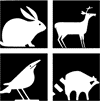Wildlife Damage Management, Internet Center for
Date of this Version
2009
Document Type
Article
Abstract
Before the reintroduction of gray wolves (Canis lupus) to Idaho in 1995–1996, the primary depredation problem for livestock producers in summer was coyote (Canis latrans) predation on sheep and lambs. Since the reintroduction and biological recovery of wolves in Idaho, wolf predation on livestock has become a bigger problem in some areas than coyote predation. We evaluated trends in predation on sheep by coyotes and wolves in Idaho during the summer months, when most sheep are grazed on United States Forest Service (USFS) grazing allotments and are most vulnerable to wolf predation. An analysis of the available data suggests a significant negative relationship between the increase in Idaho’s wolf population and summer coyote depredations on sheep (r = -0.64; p = 0.0193), and a positive relationship between the increase in Idaho’s wolf population and summer wolf depredations on sheep (r = 0.90; p < 0.0001). As expected, the value of predation losses exhibited similar relationships; the value of sheep lost to wolves was positively correlated (r = 0.94; p < 0.0001) with wolf population size and the value of sheep lost to coyotes was negatively correlated (r = -0.57; p = 0.0408) with wolf population size. Future management strategies for wolves in Idaho will ultimately determine whether these trends continue.



Comments
Published in Proceedings of the 13th WDM Conference (2009). (J. R. Boulanger, editor). 2009.